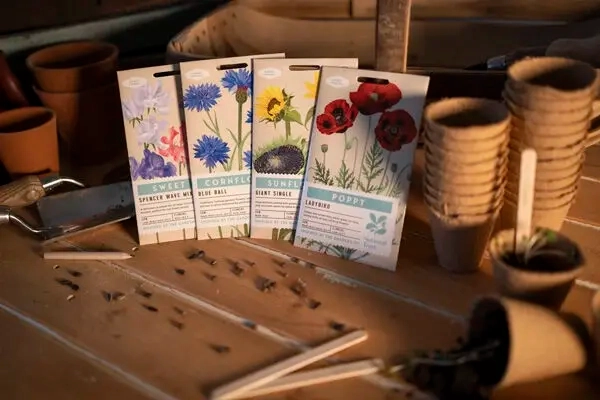14 Ways to Measure Brand Extension and Brand Licensing Impact

TLDR: How to measure brand extension and brand licensing projects so you can set better objectives, write better briefs, and ship better work.""
In this article, you'll learn how to measure the impact of brand licensing and extension activity. We'll cover the financial fundamentals, then we'll look at four other areas of measurement, including some very practical KPIs you can use to improve how you’re working day-to-day.
As a leader, you can use this guide to help you brief more effective work and understand how it performs. As a creative, this information will help you become more commercially-aware (and you’ll also get some tactical takeaways you can start applying straight away).
Most brand owners embarking on a brand licensing initiative are familiar with concepts like royalties (your cut of sales) and minimum guarantees (income guaranteed to you by the licensee). And for internal brand extension, the obvious place to focus is revenue generated by introducing a new product.
Of course money matters, but these aren’t the only ways to measure the success of licensing and extension efforts. In this article, we’ll explore what else you might measure.
Measuring financial fundamentals
Let’s look at the key commercial measures for both brand licensing and in-house brand extension projects.
Brand licensing
In the context of brand licensing, financial results are mainly measured through minimum guarantees and royalty revenues.
📈 Measure 1: Minimum guarantees
Minimum guarantees are the licensee's upfront commitment, based on how much they expect to sell. This provides a baseline financial benefit to the licensor regardless of the product's market performance. This ensures a foundational revenue stream.
📈 Measure 2: Royalty revenues
Royalties are calculated as an agreed percentage of sales. This performance-based metric aligns the interests of licensor and licensee. Revenues reflect the market success of licensed products.
In-house brand extension
Brand extension is about expanding the brand's footprint into new product categories or markets, but doesn’t necessarily rely on a licensee. In those cases — Coca-Cola introducing a new flavour, for example — brands need a different set of financial KPIs:
📈 Measure 1: Sales growth
This metric provides insight into the immediate impact of the extension strategy on the company's revenue. A positive sales growth rate indicates the brand has capitalised on its existing equity to satisfy previously untapped demand.
📈 Measure 2: Profit margin
The profit margin of an extended product line is also crucial. This indicates how well the brand is leveraging its established market presence and reputation to price extensions profitably.
Now that we’ve covered measuring financial results, let’s look at measuring marketing power.
Measuring marketing power
Successful brand licensing and extension is about taking your brand's DNA and sharing it with a broader market. This isn’t just about making more people aware of the brand; it's about bringing it to new audiences in a way that feels natural, engaging, and authentic. And if you get that right, the products you create can become your most powerful marketing assets.
Adverts everywhere all at once
Picture someone walking down the street wearing a vintage Levis T-shirt. They’re a walking billboard for the brand. They’re part of the fabric of life. It’s verging on subliminal.

Collabsolutely fabulous
With a brand collaboration like Sidemen x Hot Wheels, each brand is introduced to a new audience in a way that doesn’t really feel like marketing at all. It’s like being introduced to a potential partner by a friend, rather than meeting them on a dating app; it doesn’t feel transactional. And it immediately means more than 99% of marketing to fans of both brands.
Set your story free
Brand licensing and extension is about storytelling. Let’s say you’re a museum that’s done a deal for tableware (like our client The British Museum). The design draws on the IP in the museum’s collection; the product tells the story of the core brand in a new way.
Activity like this expands a brand’s reach whilst honouring its roots. It embeds the brand more fully in culture. And, at its most powerful, it takes them from famous to iconic.
So how do you measure all of this stuff? There are three basic questions to answer to understand the marketing power of licensing deals and extensions:
“Is this making the core brand more visible?”
“Is this making the brand more popular?”
“Are we winning more of the market?”
Let’s look at how you might answer those questions…
📈 Measure 1: Brand visibility lift
Ways to measure increasing brand visibility include:
Tracking branded search volume with Google Trends
Surveying the target audience pre- and post-launch to track brand awareness
Monitoring social media mentions
Tracking foot traffic at the brand’s physical locations
📈 Measure 2: Audience sentiment
Ways to measure changes in public perception of the brand include:
Asking customers for feedback
Analysing the sentiment of social media posts mentioning the brand
Analysing the sentiment of online reviews
Monitoring discussions in spaces like Reddit and fan forums
📈 Measure 3: Market share
Market share measures a brand's competitive position within a new category or new market. Michelin is an example of a successful solo brand extension that had a measurable positive impact on the company's market share. Originally known for manufacturing car tyres, Michelin ventured into travel guides to encourage car usage, which in turn would increase tire sales. And today, we have the Michelin Guide — it doesn't get much more iconic than that.
In short, brands that treat their products as marketing assets reach more people, get more famous, and win more fans, with less advertising spend.
As well as helping you get a more rounded view of performance, beginning a project with these measures in mind will also maximise your chances of generating strong creative work.
Savvy brand owners make marketing power a priority from the start. Understanding your audience, your competitive space, and broader cultural trends is key. For now though, let’s keep the focus on measurement. Next, we’ll discuss the concept of a ‘transmedia footprint’.
Measuring transmedia footprint
Your transmedia footprint is the sum total of formats (digital and physical) your brand has been manifested in.
Media, but speedier
Thanks to brand licensing, any business can develop media products (games, TV shows, films, apps, music etc.) without the cost or risk of setting up a production studio from scratch. This is a common approach in the toy industry (unless you’re a multi-headed giant like Disney); toy companies partner with licensees to produce content based on their IP. For example, the Barbie IP is owned by Mattel, and the 2023 film was produced by Warner Bros. Discovery. Similarly, the Transformers IP is owned by Hasbro, and the films are produced by DreamWorks Pictures and Di Bonaventura Pictures.
Elsewhere, we’ve seen video games getting the TV treatment. The Last Of Us IP is owned by Naughty Dog; the TV show was produced in collaboration with The Mighty Mint, Word Games, PlayStation Productions, and Sony Pictures Television Studios.
Let’s get physical
The real magic happens with a transmedia approach, extending strong IP into multiple new formats, and partnering with specialists in each medium. This can extend to physical media too. Naughty Dog has partnered with Themeborne to bring The Last of Us to created a tabletop game, for example.

They’ve also licensed The Last of Us IP for action figures and collectibles, collaborating with Dark Horse for sculpted figures. The same company has published a comic based on this IP too.
And thanks to brand licensing, the National Trust can sell seeds as well as memberships. This happens through a long-term partnership with Blue Diamond Garden Centres — we had the privilege of designing the seed packaging . National Trust fans can also buy floor tiles, sunglasses, Anglepoise lamps, and much else. Their transmedia footprint is chunky, but creatively coherent.

Read more about our work with the National Trust:
➡️ Skew creates the first National Trust brand licensing style guide
So what data can you track to understand your footprint? Size and speed are the easiest places to start:
📈 Measure 1: Multi-platform growth
By tracking all platforms where the brand is present, both digital and physical, you can report on the growth of your transmedia footprint over time and identify unexploited opportunities.
📈 Measure 2: Speed to market
You can measure how long it takes to get a new product from brief to launch, and also track the time taken for different project phases so you can plan better in future.
The measures outlined earlier under ‘financial fundamentals’ and ‘marketing power’ are also useful for understanding and comparing the performance of all this transmedia activity.
Of course, when thinking about your transmedia footprint, more isn’t always better. A strong licensing strategy and style guide helps you identify which formats will stretch your brand in the most productive ways, whether you’re looking to better serve your core audience, or reach a new one.
Next, let’s look at the last of our four areas of measurement — market diversification.
Measuring market diversification
Expanding a brand’s reach and influence through licensing and brand extension often involves venturing into new territories and engaging with diverse audience segments.
Total world domination
Global expansion represents a significant opportunity for brand growth, but this comes with its own set of challenges, like navigating local market nuances and regulations. Partnering with local distributors can mitigate these risks. This approach not only ensures a smoother entry into new markets but also leverages the local partner’s distribution networks. With the right knowledge and the partnership, you can take what’s working well in an existing market and extend it overseas.
As an example, in 2016 the British Museum granted the Chinese firm Alfilo Brands exclusive rights to sell licensed products in mainland China, Hong Kong and Macau. Alfilo negotiated 34 different partnerships with Chinese companies on behalf of the British Museum, selling hundreds of millions of products and driving tens of millions in sales.
📈 Measure: New markets activated
The number of new geographical markets entered is a clear indicator of a brand's global expansion success.
Make new friends, find new fans
Collaboration between brands, like the Sidemen and Hot Wheels collab mentioned earlier, is a powerful way for both brands to reach new audience segments. By joining forces, brands that complement each other’s values can mutually benefit from shared exposure. This introduces existing customers to new offerings that align with their interests but exceed their current expectations.
📈 Measure: New audiences addressed
There are a number of ways you might segment and track the audiences you reach through brand licensing and extension. You could look at demographics, life stage, or interests, for example. The starting point is understanding what your current audience looks like so you can identify where the open space is.
Measuring operational excellence
The measures we’ve discussed so far have been high-level, strategic indicators of brand licensing and extension impact. But there are also more tactical things you can measure to better understand and optimise what’s happening operationally. These are simple to implement, and can help you iteratively improve what you’re doing, whatever the longer-term objectives look like.
📈 Measure 1: Relationship satisfaction
We’re often told that the licensor/licensee relationship is an important marker of success, especially with smaller projects, but this isn’t generally measured. This can be addressed with a simple NPS-style survey, asking your partner how likely they are to recommend working with you.
📈 Measure 2: Resource optimisation
Most agencies track and measure every team member’s time usage and profitability, broken down by client and project. By tracking where people are spending their time, you can identify bottlenecks in your process (bloated feedback rounds or unwieldy style guides, for instance) and you can ensure that the most important and profitable products get an appropriate amount of product development time allocated to them.
📈 Measure 3: Asset utilisation
We often find that clients gravitate to one design in a set of assets and reuse it repeatedly. When you brief a new set of design assets, it’s a good idea to actively track which ones get used, which ones don’t, and why. This data can help you incrementally improve your briefs and use your design resource more effectively.
Effectiveness is everything
We’ve covered four areas of measurement for brand licensing and extension: financial fundamentals, marketing power, transmedia footprint, and market diversification. But rest assured, you don’t have to measure everything. In fact, if you go even one step beyond measuring immediate impact on the bottom line, you’re already way ahead of most brands.
The truth is that effective measurements rarely appear in creative briefs. The industry is so focussed on outputs and deliverables that huge creative opportunities are missed every day. Activity that could have made an imprint on culture and made the core brand more desirable instead remains tactical and often lacks long-term impact. At worst, it’s disposable, which is a huge waste of time and talent.
It’s time for brand owners to move beyond briefing style guides, and begin briefing based on outcomes. These might be a little wild, but it would be a hugely refreshing change to receive briefs more along these lines:
Develop a product that causes queues outside our partner’s flagship store
Double our branded search volume over the next 12 months
Share our brand story with 3 new audiences
Launch us in 5 new global markets
But honestly, any brief designed to spark creativity would be a big improvement on defaulting to a list of deliverables instead of considering the objectives.
Whatever the objective, brand licensing and extension should always be about delighting fans with new ways of experiencing the fandoms they love. And the creative canvas for doing that is far, far wider than most brands appreciate.You x Skew = 🚀❤️💸
We can help you build a more resilient, more profitable, and more treasured brand. And we can help you build a rounded picture of results, so that you can double down on what’s working and attack new opportunities with the confidence and commitment they deserve.
Ready to stop the hit-and-hope launches and embrace a more iterative and evidence-led approach, with creativity at its core? We’d love to tell you more about the Skew Brand Extension Accelerator — the subscription service for brand extensions proven to perform.
Get in touch to discuss how we can help you achieve great things.
P.S.
A quick message from the marketing team at Skew. The illustration for this blog was created in Midjourney and is inspired by measuring brand extension, prompt '90's retro mad scientist in a lab trying to measure something with a tape measure, psychedelic, surreal.'





